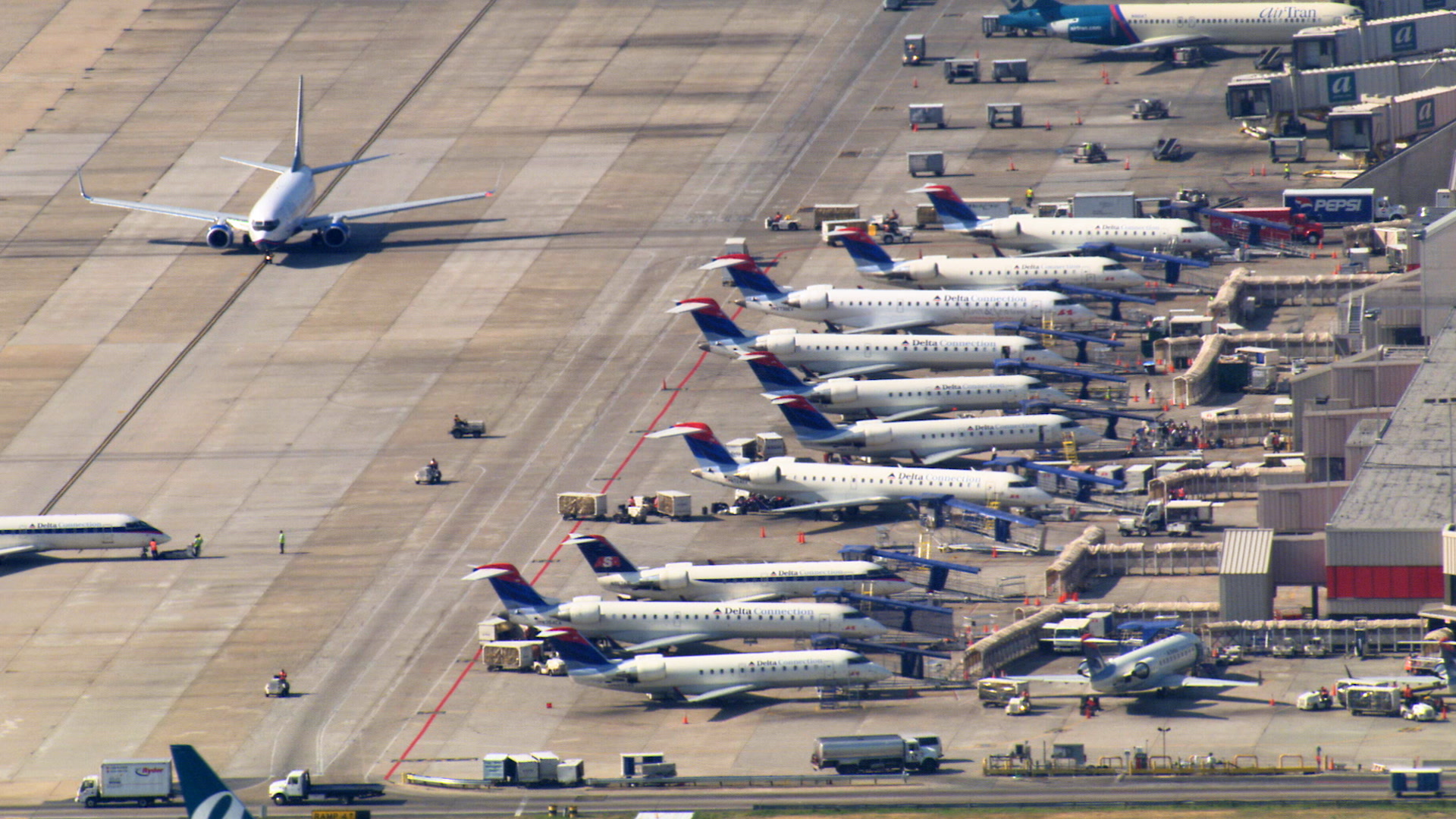America’s public transit doesn’t have to be this way. It can learn lessons from abroad

London’s newly constructed Elizabeth Line, part of Transport for London’s huge transit network, is an example of how through-running on regional rail can bring in new travellers. Image: REUTERS/Henry Nicholls

Explore and monitor how Mobility is affecting economies, industries and global issues

Get involved with our crowdsourced digital platform to deliver impact at scale
Stay up to date:
Mobility
- Unlike many global peers, American public transportation agencies are struggling to reach pre-pandemic ridership levels.
- The US has fallen behind on transit innovation, but could catch up by learning from the successes (and some failures) from around the world.
- Some of these successes include consolidating all regional transit under a single agency; adopting “through-running” regional rail; and establishing dedicated bus lanes.
Unlike many global peers, American public transportation agencies are struggling to reach pre-pandemic ridership levels. Transit systems in Dublin and Vancouver are now moving roughly as many people as they did before COVID-19, but passenger trips in the Boston and Washington, D.C. regions are still down 24% and 19%, respectively. The resulting reductions in ticket fares have opened yawning budget gaps that American transit leaders are urgently seeking to fill through public subsidies.
Such pleas are more likely to resonate if American transit embraces strategies to enhance efficiency and improve passenger trips, which helps underscore the value of new investments. The good news is that US cities can emulate approaches that have successfully boosted transit in other countries. Here are a few examples that offer potential for the US, too.
Provide seamless regional transit trips
In Germany, Austria and Switzerland, public transportation is coordinated through regional entities called Verkehrsverbünde. Established over the last several decades to align regional transit schedules and fare policies, the Verkehrsverbünde simplify trips that previously required multiple tickets and transfers. Researchers have credited these integrations for expanding transit use and reducing driving throughout central Europe.
In the United States, public transit in large regions is often fragmented. The San Francisco Bay area, for instance, contains no fewer than 27 separate transit agencies. For passengers, navigating a journey that crosses jurisdictional lines can be complicated and time-consuming. Exasperated riders may give up and opt to drive, adding to regional traffic congestion and emissions. Verkehrsverbünd-style alignments could do much to improve the status quo of American transit — and attract new riders.
Offer through-running on regional rail
For much of the 20th century, those traveling by train across the Paris region needed to take one train into the city, ride the Metro to another train station and then board another train to reach their destination. That cumbersome system hampered the mobility of suburban commuters and limited employment opportunities. It also created inefficiency by requiring trains to idle in Paris stations before returning to a suburban terminus.
In the 1970s, Paris revamped its regional rail network, the RER, around a concept known as “through-running.” With through-running, regional rail service passes through the city and continues to opposite suburbs, allowing riders to travel from one side of the region to the other without transferring. The convenience of through-running boosted Paris’s regional rail ridership while improving efficiency by eliminating time-consuming “turnarounds” in Paris train stations.
More recently, Transport for London utilized through-running in its design of the Elizabeth Line, the new Underground line that opened in May 2022. That project, too, is a success: Ridership has substantially exceeded projections.
Through-running could vastly improve the transportation networks of big, transit-rich American regions that currently offer only disjointed rail service. Leaders in the Washington, D.C. region recently took a first and welcome step toward through-running, announcing a planned extension of Maryland’s MARC rail service to Alexandria, Virginia via the District of Columbia’s Union Station.
Through-running could significantly benefit New York City if it were incorporated into a modernized Penn Station that facilitates seamless journeys between New Jersey and Long Island. Andy Byford, who previously led New York City’s MTA as well as Transport for London, has publicly supported through-running at Penn Station, calling its redevelopment a “golden opportunity” to upgrade regional train service.

Give buses and trams their own lanes
Perhaps the most powerful way to encourage transit ridership is to make passenger trips faster and more reliable. Good news: Financially-strapped governments can achieve that goal without incurring the expense of additional service if they build dedicated, enforced transit lanes.
Because transit passengers consume less street space than car occupants, they help reduce congestion as well as emissions. Regional transportation network should therefore facilitate fast transit trips – for the sake of efficiency, as well as equity and the environment. But forcing buses and streetcars to share lanes with car traffic makes transit trips slower. It also subjects riders to delays caused by car drivers blocking a bus stop or streetcar track.
The solution: Establish dedicated, car-free transit lanes that facilitate fast bus and streetcar trips. Such priority lanes are common in many countries, including Canada, Australia and Poland. A growing number of American cities, such as Richmond, Virginia and Madison, Wisconsin, are now adopting their first dedicated transit lanes, but too many American transit riders still find themselves delayed by congestion that is not their fault.
These are just a few examples of transit practices that the United States’ cities would be wise to adopt. Even better, experiences abroad can help American transportation officials avoid painful lessons that have already been learned elsewhere. For example, Tallinn, the capital of Estonia, has for a decade offered locals free transit trips on its buses, streetcars and trains. But since going fare-free, transit’s mode share in Tallinn has tumbled while driving has surged, particularly among low-income residents. The city’s experience provides a cautionary tale for American officials considering free public transportation as a strategy to reduce car use and pollution while benefitting the poor.
As they race to secure urgently needed funding, American transit agencies face their greatest challenges in generations. Fortunately, there is a world of transit insights available to help build their case. They need only look beyond their country’s borders.
Don't miss any update on this topic
Create a free account and access your personalized content collection with our latest publications and analyses.
License and Republishing
World Economic Forum articles may be republished in accordance with the Creative Commons Attribution-NonCommercial-NoDerivatives 4.0 International Public License, and in accordance with our Terms of Use.
The views expressed in this article are those of the author alone and not the World Economic Forum.
The Agenda Weekly
A weekly update of the most important issues driving the global agenda
You can unsubscribe at any time using the link in our emails. For more details, review our privacy policy.
More on Urban TransformationSee all
Angeli Mehta
May 8, 2024
Anis Nassar, Sebastian Reiter and Yuito Yamada
April 30, 2024
Lisa Chamberlain
April 25, 2024





